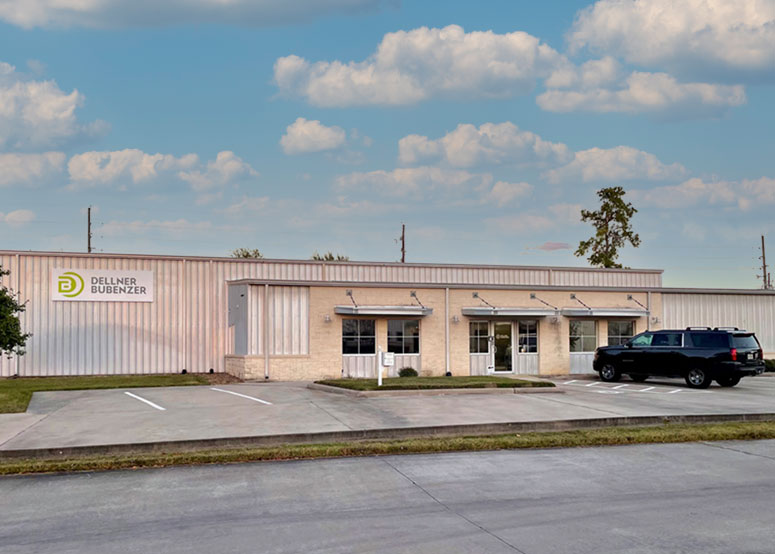Scales up local assembly for major wind turbine OEMs

FEATURED IN WIND ENERGY NETWORK MAGAZINE
Heavy-duty brake manufacturer DELLNER BUBENZER Group is seeing a marked uptake in demand for setting up local assembly for major wind turbine OEM's ramping up plants in the USA, as well as calls for increased stock and MOQ (Minimum Order Quantity).
The news comes on the back of President Joe Biden's Executive Order in 2021, to create a new American infrastructure and clean energy economy, expanding opportunities for the offshore wind industry. But at the same time, companies must be compliant with The Jones Act, which governs the transportation of merchandise across the United States, leading to severe penalties in failure to comply with the rules.
The Jones Act
Since it determines whether US coastwise-qualified or foreign-flag vessels may be employed, The Jones Act has an important effect on offshore wind project logistics, operations and costs.
For example, a vessel engaged in coastwise trade must have a coastwise endorsement issued by the US Coast Guard. To get a coastwise endorsement, a vessel must be built in the United States, registered under the US flag, owned and controlled by United States citizens.
Global control
Joel Cox, Global Sales Director, Wind, Dellner Bubenzer Group, manages activities related to all worldwide wind products, including hydraulic units, accumulators, cylinders, brakes and other equipment.
Joel explained: “We have already been informed by two of our major wind turbine OEM’s that they plan to ramp back up plants in the USA or build new plants, to overcome tariffs and bring more jobs to the USA. We have already started virtual and in-person tours for setting up assembly locally. We are ready and prepared.
“We have been ramping up to support the OEM accounts from not only Europe or Asia but their desire to meet the demands of the US market with localised work. We are increasing stock, improving MOQ working with the OEM demands and ramping up for brake, accumulator, hydraulic and pitch cylinder production locally.”
Specialist requirements
European companies such as Equinor, Avangrid, and Ørsted are pursuing windfarm projects along the eastern seaboard of the United States but customers understand that a complex offshore wind energy project requires the use of several specialised installation vessels, at various stages of the project.
Since the US coastwise trade laws restrict which vessels can perform various services in US waters, planning an offshore wind project calls for a firm understanding of the potential application of The Jones Act.
Expertise and knowledge
Joel further explained: “The Jones Act is an important delimitation between which offshore wind installation activities can be performed by foreign vessels lawfully and which activities are reserved to qualified US-flag vessels. Under The Jones Act, foreign carriers and crews are banned from domestic water routes.
“Because of our expertise and knowledge, the company has been winning many projects related to offshore work and continues to see growth from towns like New Bedford, Massachusetts, ‘blow up’ from the economic impact of the coming offshore wind turbine market.”
Long-term economic development
The North Terminal Expansion in the Port of New Bedford is a transformative port infrastructure project that will bring long-term economic development by meeting the needs of commercial fishermen, the offshore wind industry and other port users, to ensure economic growth and increased efficiency.
This, as well as industry giants such as GE, Siemens Gamesa, Vestas, ramping up activity in New York, New Jersey, Virginia, North Carolina on the east coast, Gulf waters and California prepping on the west coast, are leading to an explosion of demand in the USA.
The Gulf of Mexico also appears to be an area of interest for offshore wind developers due to the shallow Gulf waters, which allow for easier turbine installation and higher accessibility to the offshore oil and gas infrastructure and quicker construction of windfarms.
Ongoing initiatives
A number of states have ongoing initiatives to make offshore wind a viable energy source. New York has adopted a new Clean Energy Standard that asks for a large increase in renewable energy and is looking to develop 2.4 gigawatts of offshore wind power supplying the state by 2030.
New Jersey is also looking to create 3.5 gigawatts of offshore wind energy on a similar timeline as New York. Maryland, as of May 2017 and approved two offshore wind projects on its coast to be built by Deepwater Wind, the developer of the Block Island Wind Farm.
Joel concluded: “Many jobs and new ports are opening just to handle the demand of the east coast offshore expansion, between boats, technicians and contractors.”
